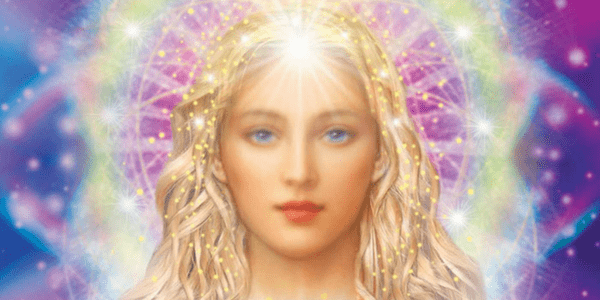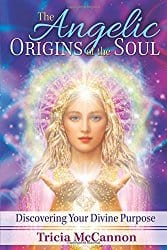The Angelic Origins of the Soul: Discovering Your Divine Purpose by Tricia McCannon
Bear & Company, 9781591432715, 528pp., 2017
Tricia McCannon, author of Return of the Divine Sophia and Jesus: The Explosive Story of 30 Lost Years and the Ancient Mystery Religions, has released her latest book titled The Angelic Origins of the Soul: Discovering Your Divine Purpose. Using her expertise as both a historian and clairvoyant, McCannon offers the reader a chance to discover and explore the reasoning behind the soul’s purpose in life. The information presented has been drawn from both her personal experience of reading for clients, and the writings of many diverse theologies, spanning multiple religions, to give a good over-arching theory of the soul’s mission on this plane of existence.
Divided into four parts, the book begins with “The Cosmology of the Soul.” In this section, McCannon delves into past lives, initiations of mystery traditions and an overview on reincarnation. She reveals her understanding that love, sound, and light are the three eternal principals of the universe noting, “these three aspects are also reflected in all nine orders of Angels, for Angels can appear as moving waveforms of color, light and sacred geometry, and hey are often accompanied by the sounds of celestial melodies.”1 McCannon brings in both science and mysticism of different theologies to teach the reader about beliefs regarding where the soul originates from. There is reference to Egyptian, Native American, Hebrew, Christianity, and Hinduism belief systems, making it quite a diverse look at how it all can be woven together in understanding the origins of our souls. McCannon also draws from Neoplatonism, Greek mythology and also Theosophy, as she often quotes H.P. Blavatsky through the book.
The second section is about Heaven and the afterlife. It dives into the landscape of Hell and what happens to people who do not spiritually progress in this lifetime. Describing the things that can keep us bound in the afterlife, McCannon notes how feelings such as anger, revenge, and self-righteousness, in addition to materialism, greed and selfishness, can prevent a soul from moving into Heaven. Near Death Experiences (NDEs) are explored within this section as well, offering information from a handful of first person accounts collected by McCannon. Her own stories are also included about what the afterlife was like, in both visual scenery and feeling, for those who have travelled there only to be returned to Earth. The different octaves and realms of Heaven are described in detail, providing the reader with a sense of hierarchy of the different dimensions, all with various physical laws to abide by. In some of these realms, telepathy is the norm, while in others flight is the common mode of transportation. Providing information on the seven dimensional plans of the astral realm, McCannon explains the connection between spirit and matter in each plane to give the reader perspective on why each level has its own unique physical laws.
The third section is where the book goes into depth about angels. Focusing on angelology, McCannon addresses questions around whether angels are truly physical spiritual embodiments from God, or whether they are of extraterrestrial origin. I won’t give away her thoughts on this, but it is an intriguing perspective. McCannon believes that to be in human form means that you were once an angel. Through this, she explains her own original theology about how the elemental energies, angels and humans are all interconnected in the genesis matrix of the universe. Also included in this section is a description of the different angels within the hierarchy, which highlights their special strengths and functions as angels. This is followed by a description of the soul’s connection to Earth through the chakras, an understanding of how souls have different ages depending on how many reincarnations they have had, and how well they have integrated their lessons.
In the final section, McCannon describes common techniques of energy-stealing that keep people from fully realizing their soul’s full potential. A triangle of victim, rescuer, and persecutor is used to demonstrate how energy is shifted in a blaming pattern, which locks people into doubt, manipulation, and shame, which keeps them from returning to the angelic origin of their soul. The patterns that are played out due to the illusion of separation are viewed through the lens of understanding that is a mechanism against rejection and abandonment that one can learn to work through. McCannon teaches the reader how to embrace the heart path (where the mind and heart working in tandem to live a conscious life) in order to learn to be more aware of how we communicate, use our energy and focus our attention to shape the karma we create in this lifetime. Understanding the laws of cause and effect on a soul level helps to take more conscious action. Ultimately what is gained through the heart path is the fulfillment of gaining the wisdom needed to master the course curriculum of life and return to the angelic origin within one’s soul.
Overall, I found The Angelic Origins of the Soul a very easy read, and it is packed with information on a variety of topics. The sections are well laid out, and the material builds nicely on previous sections to give the reader a well-rounded understanding of the topic. My favourite takeaway is the idea that a Guardian Angel is merely a myth, as there is a piece of us that never leaves Heaven, and it is that piece of us that has become known as one’s Guardian Angel. She writes, “The core of who we truly are is that pure white light, and the union we seek is with our own higher Self, which already resides in Heaven.”2 With this statement, she condemns religious authorities for failing to put the responsibility of spiritual growth on the people, instead taking it for themselves, when in reality “it is only our own ignorance, false beliefs, and negative thoughts, words and actions that can keep us from this divine reunion.”3
As much as I enjoyed the book, there are points worth noting that I highly disagreed with and found rather offensive. I was not too keen on her description of Hell and the souls who are condemned there due to offensive action during their life. It had a rather staunch moral tone to it that I felt was rather harsh, particularly around the concept of suicide. The book also upheld the split between the material and spiritual planes. It was clearly stated that if one is materially successful, it correlates to being less spiritual evolved. This is a very outdated paradigm that I feel does not hold validity. I also found the section on stages of evolution of the soul difficult to buy into. I don’t think our soul’s journey can be so neatly classified into a beginner soul versus. intermediate soul, with corresponding descriptions of how each soul behaves based on its spiritual maturity. To me, a soul’s journey is something organic and unique, and it can’t be quantified into levels quite so easily.
Unfortunately, the book is primarily centred on a monotheistic God. While McCannon does bring in the Divine Mother, and does not assign gender to the terms used (she notes that” God” can also refer to Goddess or Universe or Source), she primarily used the term God and had a lot of material from Abrahamic religions. The history and ideas put forth seem to come from this patriarchal model, and while McCannon does her best to tie in the Divine Feminine, overall the information does not account for a more cyclical, spiral like view of the soul, instead opting for a more linear and hierarchical portrayal.
That said, I recommend The Angelic Origins of the Soul to anyone who is looking to learn more about the angelic realm and how it relates to their soul’s journey. Anyone on a spiritual path centred around monotheism would be able to take something away from this book, as it is so well researched and comprehensive in the sources it draws from that it is bound to spark new revelations. McCannon has successfully woven together a wide and encompassing account of religious philosophy to provide the reader with a new way to understand themselves and the mission of their soul in this lifetime, connected to the angels and the love surrounding us. While it puts forward view points that seem to have a moralistic tone at times, it is worth the read — if only to see how the information presented may or may not fit your own belief system. It has the possibility to prompt a new perspective about why you are here.










